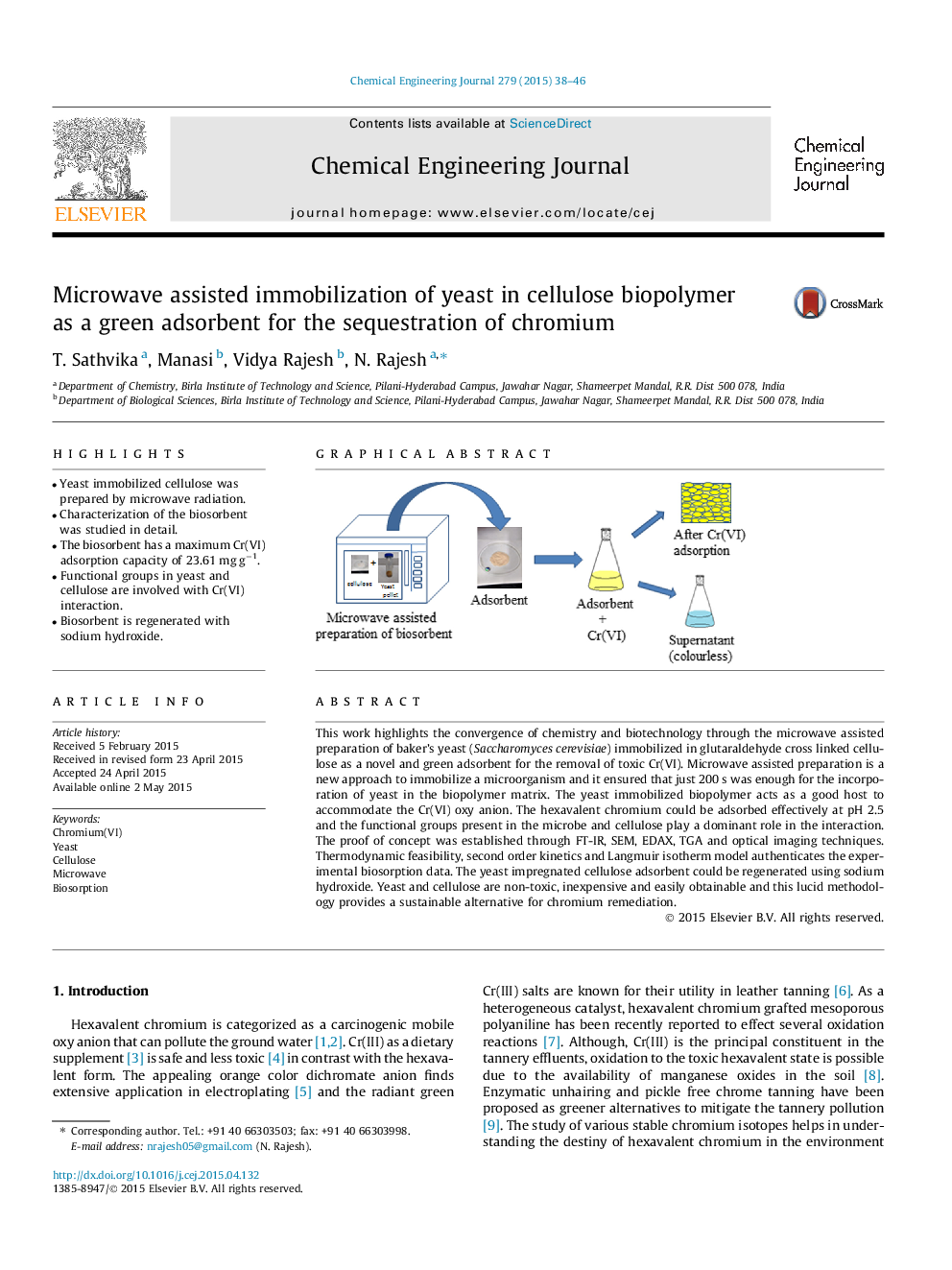| Article ID | Journal | Published Year | Pages | File Type |
|---|---|---|---|---|
| 146054 | Chemical Engineering Journal | 2015 | 9 Pages |
•Yeast immobilized cellulose was prepared by microwave radiation.•Characterization of the biosorbent was studied in detail.•The biosorbent has a maximum Cr(VI) adsorption capacity of 23.61 mg g−1.•Functional groups in yeast and cellulose are involved with Cr(VI) interaction.•Biosorbent is regenerated with sodium hydroxide.
This work highlights the convergence of chemistry and biotechnology through the microwave assisted preparation of baker's yeast (Saccharomyces cerevisiae) immobilized in glutaraldehyde cross linked cellulose as a novel and green adsorbent for the removal of toxic Cr(VI). Microwave assisted preparation is a new approach to immobilize a microorganism and it ensured that just 200 s was enough for the incorporation of yeast in the biopolymer matrix. The yeast immobilized biopolymer acts as a good host to accommodate the Cr(VI) oxy anion. The hexavalent chromium could be adsorbed effectively at pH 2.5 and the functional groups present in the microbe and cellulose play a dominant role in the interaction. The proof of concept was established through FT-IR, SEM, EDAX, TGA and optical imaging techniques. Thermodynamic feasibility, second order kinetics and Langmuir isotherm model authenticates the experimental biosorption data. The yeast impregnated cellulose adsorbent could be regenerated using sodium hydroxide. Yeast and cellulose are non-toxic, inexpensive and easily obtainable and this lucid methodology provides a sustainable alternative for chromium remediation.
Graphical abstractFigure optionsDownload full-size imageDownload as PowerPoint slide
